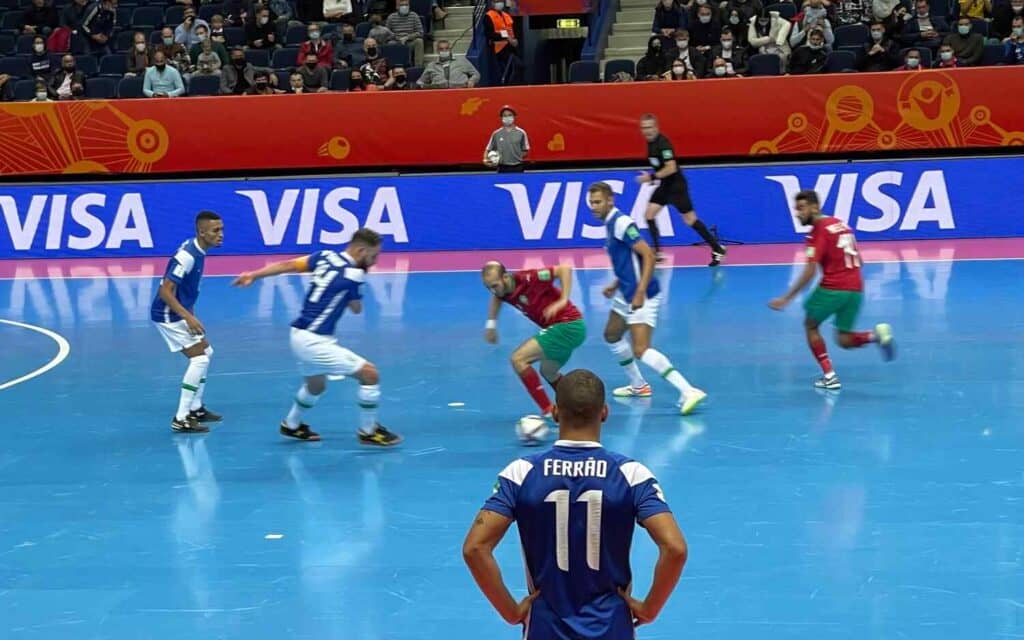
Futsal’s rapid passes and dynamic plays often spark the question: does it need to be an indoor sport? Many assume the buzz of this five-a-side game is contained within four walls, but the truth is more flexible.
Futsal thrives in various settings, indoor and outdoor, challenging players to adapt to different surfaces and conditions. Stay with us as we clear the air on where futsal can really happen—no indoor court required.
In a hurry? Here’s a quick & short answer that’ll definitely help you out!
Futsal, a football-based game, is not strictly confined to indoor play. While it’s commonly played indoors on a hardcourt, it can also be played outdoors. The versatility of futsal allows it to be played in various venues, with or without a roof, making it adaptable to different environments. Therefore, futsal does not have to be indoor, contrary to common belief
The Fundamentals of Futsal Rules

Grasping the fundamental rules of futsal is key to enjoying its brisk and skill-focused character. When you play, it’s a condensed version of soccer suitable for a smaller, often indoor space.
Instead of the usual 11 players in soccer, your squad consists of five members, which puts an emphasis on tight ball handling and rapid exchanges.
The ball utilized is tinier and less springy, requiring more accuracy and ability. Futsal doesn’t have an offside rule, allowing you to take full advantage of the playing area and making strategic placement vital. The game clock halts during dead-ball events, preserving the continuity and vigor of the match.
This sport is one where individual creativity flourishes in conjunction with collective strategy and tactical shrewdness.
Get a good grasp of these elements, and you’ll gain the ability to engage in and observe futsal with an insightful perspective.
Does Futsal Have to Be Indoor?
Futsal is often played indoors, but it can be enjoyed outside as well, conforming to different settings without altering the essence of the sport. You may question if playing outside changes the experience significantly. The response involves the playing surface and available area.
Surfaces for futsal played outside must be smooth and even to preserve the game’s rhythm. The guidelines stay the same, ensuring the sport maintains its integrity no matter the location.
Moving the game outside can bring advantages such as easier access for those who want to play or watch. Weather conditions are an important factor to bear in mind since they can affect how the game is played.
Whether played inside or outside, the flexible nature of futsal demonstrates why it’s beloved and adaptable across the globe.
Comparing Indoor and Outdoor Futsal

How does the player’s experience differ when futsal is played indoors compared to outdoors?
Playing futsal inside provides a stable setting, unaffected by weather. The even, flat surface allows for the ball to behave consistently, enabling a quick, technique-oriented match that focuses on skill and accuracy.
Playing futsal outside introduces elements such as breeze and irregular playing fields, which can unpredictably influence ball paths and player stability. Yet, outdoor matches encourage a more adaptable approach, prompting players to adjust to these conditions.
Indoor spaces often foster a more personal environment with spectators close by, amplifying the thrill. On the flip side, outside matches might present a more laid-back vibe with sunlight and fresh air, potentially diminishing player exhaustion and improving stamina.
Each environment presents a unique experience, influencing the strategies and pleasure derived from the match.
Advantages of Indoor Futsal
Indoor futsal consistently offers players a controlled environment, free from the unpredictability of outdoor elements, which enhances the quality of play and skill development. The steady conditions ensure that skills aren’t compromised by wind or weather variations.
The flat, smooth surface promotes a faster-paced game, demanding quick reflexes and sharp ball control. This environment is conducive to the development of precise passing and dribbling techniques, which are crucial for a player’s improvement.
The smaller, bounded space increases the frequency of player-to-ball interactions, which accelerates decision-making skills. The absence of natural elements also means there are fewer game cancellations, providing players with more consistent playtime.
Indoor futsal focuses on refining your abilities in a setting where external factors don’t interfere with the sport’s integrity.
Case Studies: Successful Outdoor Futsal Events

Successful outdoor futsal events, such as the World Futsal Championships held in Orlando, showcase the sport’s adaptability and the vibrant atmosphere unique to outdoor play.
These events demonstrate that futsal isn’t confined to indoor spaces and can thrive under the open sky. Here are a few instances:
- Street Futsal USA Tournament: Held in Los Angeles, this event turned city spaces into pulsing arenas, attracting diverse crowds and street players.
- Intercontinental Futsal Cup: Played in Greensboro, the tournament highlighted international talent and proved outdoor conditions could match indoor standards.
- European Universities Games: With various outdoor courts across Europe, the games underlined futsal’s universality and its ability to engage students in an outdoor setting.
You’ll see that outdoor futsal isn’t just feasible; it can also be a resounding success.



